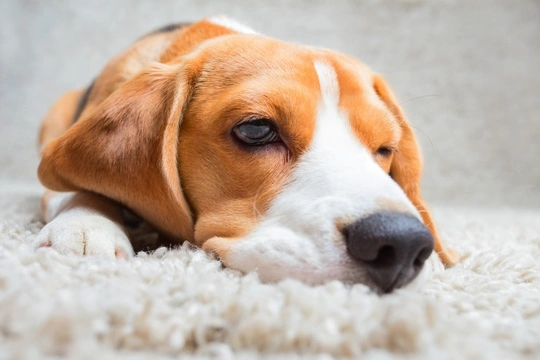
Aftercare for a spayed bitch - what to expect
Spaying is a surgical procedure to remove the ovaries of female dogs, so that they will have neither the desire nor the ability to breed. This is important for all bitches for whom breeding is not planned, in order to ensure that no mis-mating accidents ensue, and that you do not find yourself with an unexpected litter on your hands!
As well as helping to ensure that your bitch does not become the mother of yet another unwanted litter and so, will not contribute to the ever-growing numbers of unplanned litters that require rehoming every year, spaying will help to prevent the potential behavioural problems that can arise when a bitch comes into season. Spaying will also ensure that your dog will not develop ovarian cancer later in life.
Whilst most puppy buyers have their pups spayed during their first year of life, it is also of course possible to spay an older female dog, and this is common as well when bitches are rehomed, or have had one litter but it is not desirable to permit them to have more.
This means that anyone who owns or will own a female dog will likely go through the process of having them spayed at some point, and the spay operation is in fact the most common internal surgical procedure performed in the average general UK veterinary clinic!
However, spaying is still a major operation, and whilst it is one of the safest and most efficient, not least due to the number of such operations that all UK vets will perform, the procedure should still be treated with respect as the large operation that it is.
This means that when your bitch has been spayed, you will have to take care of them at home carefully for the first couple of weeks after the op, to ensure that everything heals properly and that no complications arise.
In this article, we will look at the typical aftercare required of the spayed bitch, as well as covering what is normal post-spay and what may be cause for concern. Read on to learn more.
Communicating with your vet
When you check your dog in for their surgery, they will require you to sign a permission and information form, which will outline what is going to happen and the basic of what to expect after the procedure when your dog goes home.
Additionally, your vet should talk you through the aftercare of your dog in person when your dog is discharged, and be available to you by phone in the following days, in case you have any questions of concerns. They will also almost certainly schedule a follow-up check-up for your dog a few days after the surgery.
Collecting your dog
The vast majority of bitches that are spayed will return home the same day, to continue their recovery at home. Once the dog is fully awake, able to stand and shows willingness to eat, they will likely be ready to be discharged.
There are some potential exceptions to this, such as if your dog is spayed very late in the day and their recovery needs to be monitored for longer, if your dog seems to be in more pain than normal, or if there are any complications with the surgery or immediate recovery.
You can of course expect your vet to keep you fully informed about what is going on, and explain in detail why your dog cannot go home yet if this becomes an issue.
Normal aftereffects of spaying
There are several perfectly normal aftereffects of the spaying surgery that you will be told to be aware of after the surgery, and how acute these are can vary from dog to dog.
Your dog may well still be a little woozy from the anaesthetic, particularly if their procedure was performed late in the day, and this means that they may sleep more, or more deeply than normal once they get home.
Your bitch may also move and lie with more care than normal, due to the recovering wound, and they should be restricted from vigorous exercise and stopped from jumping or climbing until the incision has properly healed.
The wound itself will of course be clearly visible, and this should be kept an eye on.
Indications of potential problems
Despite the fact that a spay operation is a major surgery, serious complications after the event are uncommon, and monitoring your dog and the incision site can help to prevent many of them.
One of the main risks after surgery is the potential for infection, and so while the incision site may look a little angry and new, it should not be overly inflamed, and should not be weeping or bleeding heavily. If the wound opens up, this is another potential problem.
Indications of infection can include a dark, angry red colouring to the wound, significant smelling, a foul discharge, or a strange colour.
Additionally, if your dog seems to be in serious pain, cannot stand up comfortably or does not pass stools or urine, or does not eat within 24 hours, contact your vet for advice.



